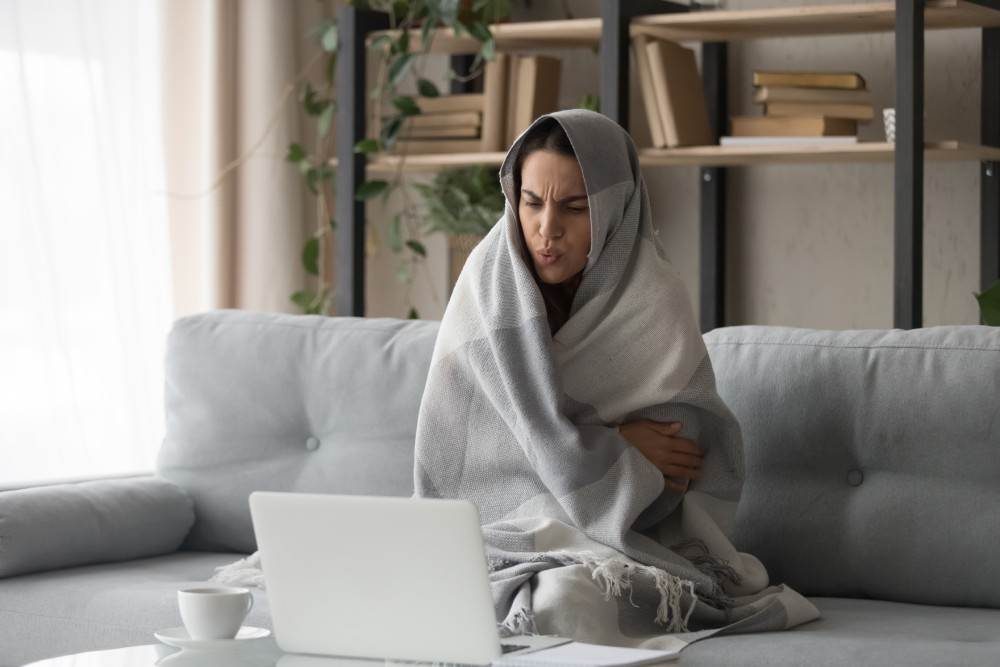
There’s nothing worse than coming home to a cold house on a chilly day. Unfortunately, this is a common problem for many homeowners. If your home isn’t staying warm and you’re running the heater, there are potential reasons why it may not be working as efficiently as it should be.
If you’re constantly wondering, why is my house not staying warm? Then, this blog is for you. Here, we’ll review why your house may be getting colder with the heat on and why your heater may not be keeping the house warm.
1. Inadequate Insulation
One of the most common reasons why a home isn’t staying warm is because there’s inadequate insulation in the attic or walls. If your home was built before 1980, it likely doesn’t have enough insulation to keep the air in. Poorly insulated walls and attics can lead to air infiltration and drafts, which can dramatically reduce the temperature in your home even if you’re running the heater at full blast.
2. Furnace Issues
If your furnace isn’t working properly, it won’t be able to heat your house effectively. Common signs of a malfunctioning furnace include strange noises, poor airflow, and inconsistent temperatures. If you notice any of these signs, it’s best to call a professional HVAC repair airflow for an inspection.
3. Clogged Air Filters
Furnace air filters help collect dirt, dust, and other particles that can circulate through the HVAC system. If the air filter is clogged, it can restrict airflow and make it harder for your furnace to keep your house warm. You should check your air filters regularly and replace them as necessary.
4. Leaky Ductwork
Leaky ducts are a common cause of why your house is not staying warm.
To detect air leaks in your ductwork, take a smoke pencil and hold it up to any unclosed seams. If the pencil produces smoke, seal off the breach using foil-faced duct tape. You can also cover all of your ducts with R-6 foil-faced fiberglass insulation–just be sure it’s trimmed for a precise fit. This will help guard against warm air from getting away, while also guaranteeing proper circulation throughout your home.
5. Insufficient Attic Insulation
Insufficient attic insulation is another cause why your house is getting colder even with the heat on. Check the R-value of your insulation to see if it is sufficient for your area. You may need to add additional insulation, such as cellulose or blown-in fiberglass, to prevent heat from escaping and help keep your home warm in the winter months. Additionally, make sure that any air ducts in the attic are properly sealed and insulated.
6. High Ceilings
While high ceilings are aesthetically pleasing, they can be a major source of heat loss in your home. Hot air rises and the further up it travels, the colder it gets. Installing insulation around windows, doors and exterior walls can help keep out drafts while also helping to trap heat inside your home.
7. Drywall Leaks
Drywall leaks are usually caused by cracked or damaged drywall, which can be a major source of heat loss in your home. If you find that cold air is coming from the wall, it’s likely due to an insulation problem. You may need to patch and repair the drywall, add additional insulation, and/or caulk any cracks or gaps in the drywall to prevent heat from escaping.
8. Poorly-Sealed Attic Floor
Heat will escape through any cracks or gaps in the attic floor. So, it’s important to inspect it for any signs of air leakage. If you find any leaks, seal them with foam insulation or weatherstripping. You may also want to add additional insulation to the attic floor if you find that your home is still losing heat.
9. Leaky Windows and Doors
Old or poorly installed windows and doors are another major source of heat loss in the home. To keep your house warm, check for any drafts around the frames and caulk any cracks or gaps. If necessary, replace the windows and doors with more energy-efficient models.
10. Malfunctioning Heating System
If all other sources of heat loss have been addressed, then the cause of why your house is not staying warm could be a malfunctioning heating system. If you’re experiencing any issues with your furnace or boiler, contact a professional for HVAC repairs.
Hibdon’s Heat and Air in Oklahoma City, OK is here to provide you with all the HVAC solutions you need. Our experienced technicians can help assess existing windows and doors for drafts or cracks. As well as check your heating system for any needed repairs.

